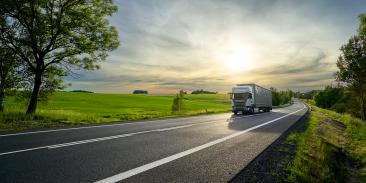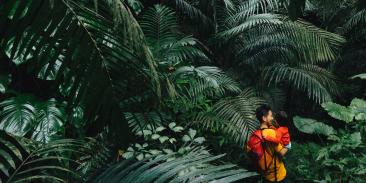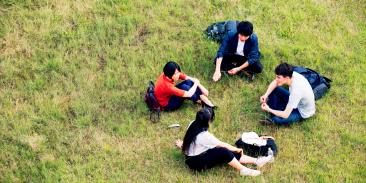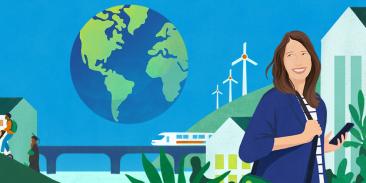Indigenous Groups See Climate Change in the Stars, Fires
Ntôni Kisêdje, leader of the Kisêdje people, with his pet capybara
Steve Schwartzman
Richard Muller, a physicist at Berkeley and a founder of the Berkeley Earth Surface Temperature project, used to be a skeptic on climate change. His analysis of climate data changed his mind; today he, like the overwhelming majority of scientists believes that climate change is real and caused by people. But, also like most scientists, Muller’s evidence comes primarily from the statistical analysis of large numbers of temperature observations over many years – not from direct observation of nature.
Ntôni Kisêdje, leader of the Kisêdje people in the Xingu river basin in Mato Grosso, Brazil, has a different perspective. Ntôni is a traditional healer and a highly skilled forest farmer, and like most of his peers across the Amazon he pays very careful attention to what the myriad plants and animals of forest are doing at different times of the year – and to the weather.
“Before, when the little group of stars [the Pleiades] came out at sunset, and the muricí (Byrsonima crassifolia) flowered, it was the time to make gardens,” Ntôni told a seminar on agriculture and climate change in Cuiabá, the capital of the Brazilian state of Mato Grosso. “People would clear their gardens, then the rains would come. We can see that this has changed.”
What Ntôni is seeing is dramatic. And he’s not alone. There are 15 other indigenous groups who live in the vast Xingu National Park and they too, like Indians throughout the Amazon, time their yearly farming cycle to the appearance of the Pleiades at sunset. They take this as a reliable signal of the end of the dry season and the beginning of the rains needed for crops to grow. This is part of their oral tradition, handed down over hundreds of generations. If the rise of the Pleiades has indicated the start of the rains for thousands of years, and now is no longer a reliable signal, this is itself probably a sign of climate change.
Ntôni and other people in the Xingu also say that the way fire behaves in the forest has changed. The peoples of Xingu have used fire as a landscape and resource management tool for millennia, to clear forest to plant crops, to add nutrients to soil, clear trails, collect honey and favor growth of useful plants. But Ntôni says that fires that used to burn only forest that was cleared for gardens, now, in dry years may run out of control over large expanses of forest that used to be too moist to burn.
This too confirms what western science suggests are some of the first effects of climate change in the Amazon.
Ntôni’s people and the other indigenous groups in the Xingu live in forest that’s in between dense moist Amazon forest to the north and the drier tropical savanna to the south. The sort of data-driven climate models that scientists like Muller work with predict that such land, on the border between forest and grassland, is highly vulnerable to climate change. Drought, and the wildfires that come with it, could turn the forests of the Kisêdje into savanna.
Deforestation in Xingu Indigenous Territory, 2000 (top) and 2010
Steve Schwartzman
In the last twenty years the forests of the upper headwaters of the Xingu have been cleared for cattle ranching and soy farming, so that today the Kisêdje and the other 15 indigenous peoples of the Xingu Park live on an island of forest in a sea of deforestation. Fires that ranchers and farmers start to burn forest or old pasture increasingly sweep into indigenous territories in dry years. The Instituto Socioambiental, one of Environmental Defense Fund’s partners in Brazil, is helping the Xingu indigenous groups learn how to control and combat these fires, but they know that burning fossil fuels and deforestation far beyond their territories are behind climate change.
For Ntôni and his people, climate change is now part of the fabric of their daily lives. They see the changes and know more are coming. Their hope is that people in the developed world will come to share the Kisêdje’s sense of urgency in dealing with the root causes of this global threat – including deforestation.
As Ntôni says: ”Bad things can happen to people who cut down lots of forest, and they may not even know it.”












Climate change is in my opinion that most urgent and far-reaching challenge of our time. Yet when I read this article I wondered if the problems encountered by indigenous people in the Amazon - unaccustomed dryness or a change in the weather cycle, are caused at least in part directly by deforestation in neighboring lands, or if deforestation is a cause because it contributes to climate change in general. This may seem an academic distinction, but I think it is actually important.
In addition, anecdotal "evidence" that seems to confirm the effects of climate change, without scientific studies to back it up, can weaken the arguments about climate change in the long run. I'd like to know if any such studies have been or are being carried out to support this "evidence."
Nancy Roberts-Moneir
May 6, 2013 at 4:14 pm